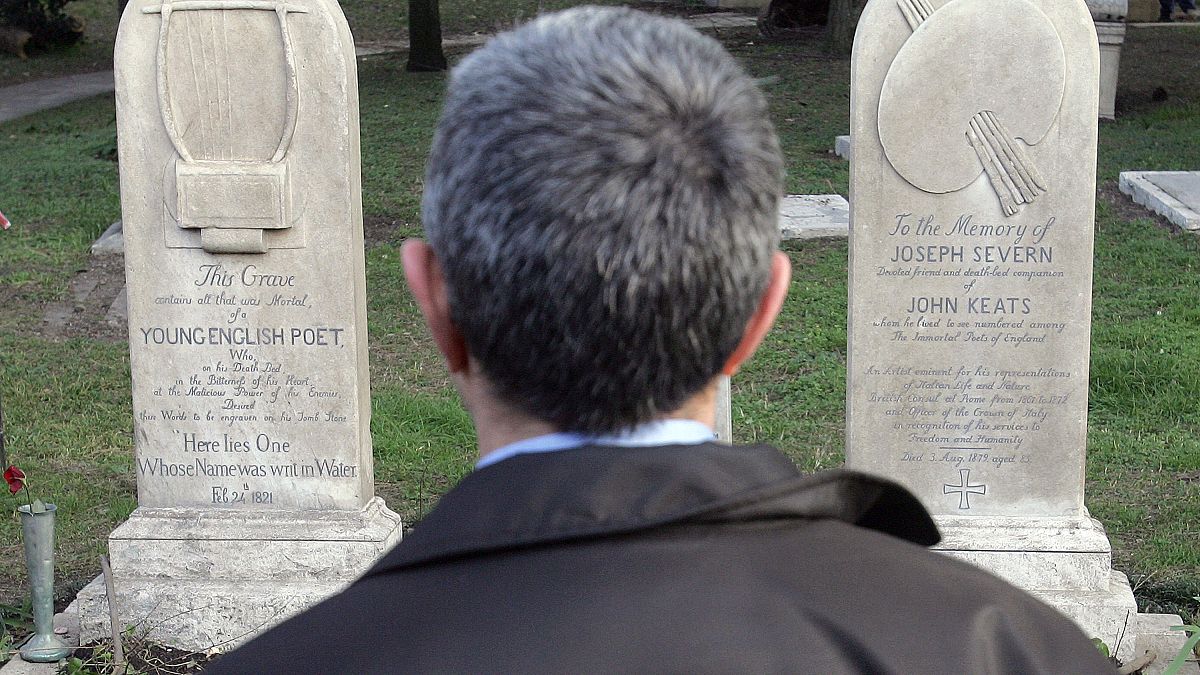How the Romantic poet lives on: scientists from the Institute for Digital Archaeology have 'virtually recreated him' thanks to Computer Generated Imagery.
Two centuries ago, on February 23, 1821, one of the most beloved English poets, John Keats, died of tuberculosis at the age of 25 in Rome.
To mark the bicentenary anniversary of his death, the Romantic poet is being virtually 'brought back to life' by a team of scientists from the Institute for Digital Archeology (IDA) in Oxford, joined by a team of linguists, curators and physicists.
Together, not only have they 'resurrected' Keats' appearance thanks to research-informed Computer Generated Imagery (CGI), but also his voice, diction, and clothing were meticulously recreated.
Roger Michel, the IDA's founder and executive director, thinks that the best way to honour Keats on this occasion was to give him his poetry back, in his authentic voice.
"Anybody who's ever heard Bach's French Suites on the piano knows that it was intended to be played on the harpsichord. And anybody who attends the virtual reading this evening will understand that to appreciate Keats, you need to hear it read as it was intended to be read — as Keats heard it in his mind as he was writing the poetry," Michel told Euronews.
The CGI Keats was commissioned by the Keats-Shelley Memorial Association for the bicentennial celebrations starting today.
The festivities include a poetry reading by the English poet's tomb in the morning, followed by a virtual tour of the Keats-Shelley House led by rock star and philanthropist Bob Geldof.
They will come to an end with a virtual recital of one of Keats' most famous works, Bright Star, originally written for fiancée Fanny Brawne, taking place tonight from the very room where he died.
Keats brought back into the spotlight
Not hailed in his time as a great poet, and although there were early notable champions of his work, including Percy Bysshe Shelley, John Keats appeared as a perennially frail, tragic figure, one who was destined to die young.
Pilloried for his voice, Keats was called a 'Cockney poet', a term of disparagement at the time. But the IDA's scientists are hoping to turn things around.
"The reality is that we're bringing back some of that original, authentic Cockney accent to show how this poetry can really sing when it's read in the way that it's supposed to be read," Roger Michel added.
Due to his young age when he died, and because he was still too unknown, Keats had very few portraits painted of him.
The Institute for Digital Archeology combined scans of miniature portraits with life and death masks of the poet to produce a 3D model of Keats' features.
Most known for his Great Odes of 1819, Keats was a prolific writer of poetry and letters, writing most of his poems in the space of just over a year.
"Keats was absolutely convinced of his talent and believed that one day he ‘shall be among the English poets’. His life is a paragon of the virtue of patience and of the merits of hard work, which I think we can all be inspired by in this time of global crisis," said Giuseppe Albano, curator of the Keats-Shelley House.
Living during a time of pandemic himself, Keats died of tuberculosis, a disease which had already robbed him of his brother Tom a year earlier and his mother a decade before.
"I think people are looking at the Romantic tradition that has always been bound up with a sense of death and foreboding. And that's part of the allure, part of the image. Certainly we're living at a time where, tragically, death is very much with us. And so, I think it's only natural to look back to times that have similar historical features," Michel said.
How has Europe influenced Keats' work?
Keats was very much affected by the art and architecture of Italy and those influences are shot through his works.
The motif of the architectural ruin, so central to the Romantic idiom, comes straight from the poets' exposure to the landscape of the wider European continent.
Both Keats’ fiercest political sonnet, 'Sonnet. On Peace', and his loveliest pastoral sonnet, 'Happy is England' are about Europe.
The former was written after the Battle of Waterloo and imagines a new post-Napoleonic Europe, and the latter rivals the idyllic simplicity of English rural life with the mytho-poetical lure of Italy, sublimated in the poet’s consciousness.
The Romantic poet had also travelled to Rome in the hope that the milder Mediterranean climate would alleviate the suffering caused by his tuberculosis.
"It never ceases to amaze me just much love he inspires in readers all across the world, as attested by the truly global following the Keats-Shelley House museum has on social media, and Keats is particularly loved across South Asia and the Far East," Albano told Euronews.
After Keats, the Institute for Digital Archeology hopes to do more scientifically accurate recreations, with a project to see and hear Dante read the Inferno next.


